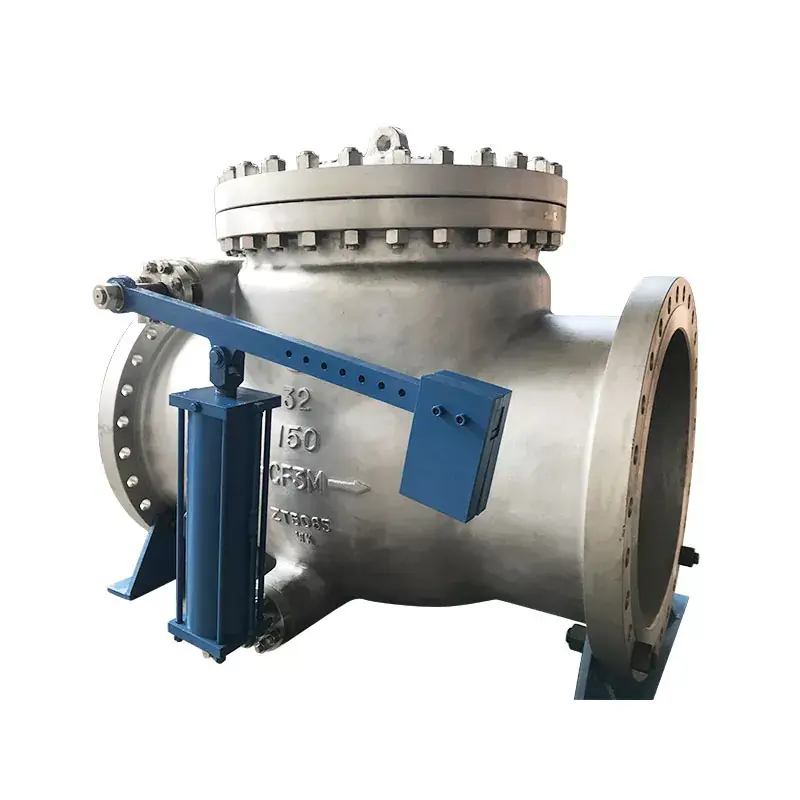Why does our Hanno brand backflow prevention solution deliver superior performance in your system?
2025-10-23
As a technician with over 20 years of experience within the industry, I want to share how we at Hanno deliver reliable backflow prevention with our high-performance valves. In this article I’ll explain the key features of our product line, why they matter for you, and how they address real-world problems. I’ll also detail the specifications of our valves in tabular and list form so you can clearly compare options. And of course I’ll highlight how our solution ensures robust protection via Check Valves built into the system.
What problem does a backflow prevention valve solve?
Backflow is the unwanted reverse flow of water (or other fluids) from downstream back into your potable water system. This reverse flow can occur due to back-pressure or backsiphonage, and it poses significant hazards of contamination.
In practical terms, plumbing systems, irrigation systems, fire‐suppression systems and industrial water loops all face risks of cross-connection or reverse flow. Consequently, installing a suitable backflow prevention valve (or assembly) is crucial to protect your water supply and ensure compliance with local and national standards.
At Hanno we recognised that many clients faced issues such as:
-
Unnoticed leakage or “silent” backflow through worn check valves
-
High maintenance demands and downtime when servicing valves
-
Poor clarity about performance parameters (flow rate, pressure loss, materials)
So our aim was to design a valve line that addresses those pain points.
How does the Hanno backflow prevention valve work and how is it constructed?
Our valves incorporate a number of design features that ensure dependable protection and ease of service:
-
Dual spring‐loaded check valves (in assemblies where required) to provide redundancy ► this ensures that even if one check valve struggles, the other maintains the seal. (This aligns with the design concept for double check assemblies.)
-
A full-port relief chamber (on reduced pressure models) to vent backflow pressure and protect the upstream system. (As recommended in engineering standards.)
-
Test cocks and shut-off valves incorporated flanking the main assembly, enabling in situ testing without full removal. This simplifies routine maintenance and inspection. (Standards call for test cocks on both double‐check and reduced pressure devices.)
-
Durable materials (bronze/ductile iron body, stainless internals, corrosion-resistant coatings) suited for potable water, fire protection, irrigation or industrial use.
-
Clear labelling of flow-rating, pressure drop, and service intervals to help you plan maintenance proactively.
What are the key technical parameters of our product range?
Here is a breakdown of typical specifications we offer under the Hanno line of backflow prevention valves:
| Parameter | Hanno Model A (Double Check) | Hanno Model B (Reduced Pressure) | Hanno Model C (Irrigation/Light Duty) |
|---|---|---|---|
| Nominal size | ½″ to 10″ (15 mm–250 mm) | ½″ to 10″ | ½″ to 6″ |
| Maximum rated flow* | Up to ~2,300 gpm (for 10″ size) | Up to ~2,300 gpm | Up to ~1,000 gpm |
| Max allowable pressure loss at rated flow | ~10 psi (double check) | ~14–22 psi (reduced pressure) | ~10–12 psi (light duty) |
| Max working pressure | 300 psi (≈20.7 bar) | 300 psi | 250 psi |
| Temperature rating | –20 °C to +80 °C (standard) | –20 °C to +80 °C | –10 °C to +50 °C |
| Materials | Bronze body, stainless internals | Ductile iron or bronze body | Bronze body |
| Test ports | 4 test cocks on main assembly | 4 test cocks + relief discharge | 2 test cocks |
| Certification | ANSI/ASSE 1015 (Double Check) | ANSI/ASSE 1013 (Reduced Pressure) | Local approvals |
* Flow ratings depend on nominal size and application; please consult Hanno’s detailed datasheet for exact values.
In list form, here are key features you should focus on when selecting a valve:
-
Proper nominal size for system flow and pressure (avoiding oversizing or undersizing)
-
Verified allowable pressure drop at rated flow (to ensure minimal effect on system performance)
-
Certification to recognised standards (e.g., ASSE, AWWA)
-
Easy access for testing and maintenance (test cocks, shut-off valves)
-
Material compatibility (potable water, fire, irrigation, industrial)
-
Clear labelling and traceability (model, size, serial number)
-
Local code compliance (including installation height, clearance, orientation)
When should you choose a double check type versus a reduced pressure type valve?
From my 20 years of field experience:
-
Choose a double check valve assembly (like Hanno Model A) when the hazard level is moderate (e.g., irrigation, non‐hazardous fire-sprinkler systems) and where both back‐pressure and backsiphonage protection are required. As the general design guideline states, a double check valve is suited for many non‐health hazard applications.
-
Choose a reduced pressure principle assembly (like Hanno Model B) when the hazard is significant (e.g., chemical feed, reclaimed water, high-risk cross-connection). Because the reduced pressure device includes a relief port and is designed to handle more stringent requirements.
-
For more straightforward irrigation or low-hazard situations, a lighter duty model (Hanno Model C) can suffice—and it helps lower cost while still providing robust protection for that application.
It’s important to match the valve type to the hazard level, system requirements, and local code mandates.
How do we at Hanno make sure our valves are installed and maintained to deliver lasting reliability?
Since I’ve worked on many installations, I’ve observed that even a technically excellent valve fails to serve if installation or maintenance is sub-par. Here’s how we support you:
-
We supply detailed installation instructions, including recommended clearance, orientation and accessibility for testing. For example, standards recommend a minimum clearance above grade and easy access to test cocks.
-
We offer training for your maintenance personnel on how to carry out periodic testing (via test cocks) and how to interpret relief port discharge indications.
-
We provide datasheets with clear performance parameters (flow, pressure drop, materials) so you can plan for system integration and evaluate performance impact.
-
We support preventative maintenance schedules and can supply spare parts (seats, springs, O-rings) for onsite servicing—minimising downtime and cost.
-
We maintain records of model, size, serial numbers, test history, and encourage you to keep a log for future inspections or regulatory compliance.
Why is choosing Hanno backflow prevention the right decision for you and how will it reduce your pain-points?
By selecting Hanno valves you benefit from:
-
Reduced risk of contamination or reverse flow events (which can lead to system shutdowns, regulatory fines, or health hazards)
-
Clarity in specifications—so you know exactly how the valve will perform in your system
-
Easier maintenance and longer life, thanks to service-friendly design and robust materials
-
Compliance support—our valves meet or exceed recognised standards, helping you satisfy inspection and testing requirements
-
Peace of mind from our 20 + years of real-world experience (and my personal involvement) ensuring you’re backed by workmanship and support
What should you do next if you want to discuss your project and choose the right model?
I’d love to help you evaluate your system and select the correct Hanno backflow prevention valve for your needs. Please contact us and provide details such as: nominal size, flow rate, system pressure, type of hazard (irrigation/fire/domestic/industrial), and maintenance availability. We will guide you through model selection, installation best-practices, and preventive maintenance schedules.
Don’t leave risk to chance—reach out today, and let’s get your system protected with the right solution from Hanno. We look forward to hearing from you.



